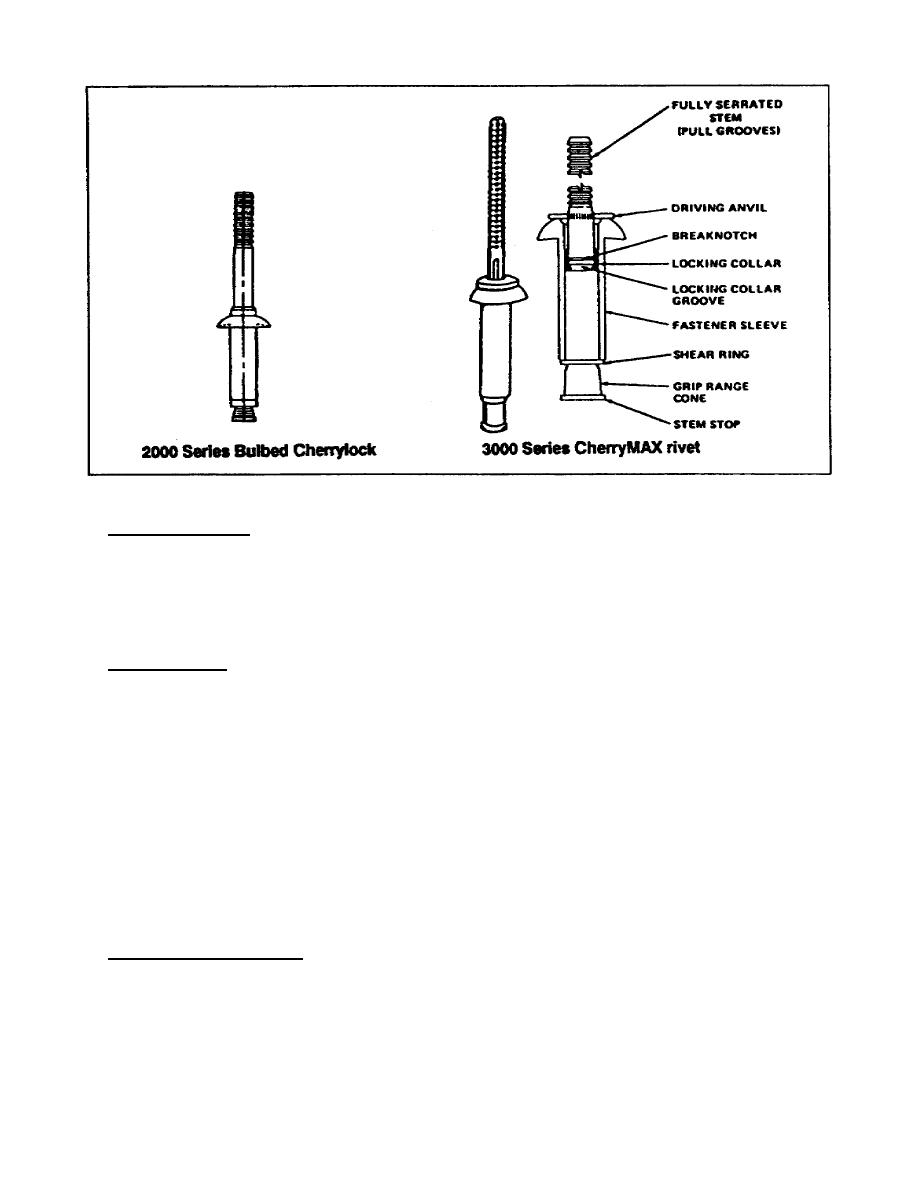
Figure 1-12a.
Self-Plugging (Mechanical Lock) Rivets.
Rivet Removal. When a rivet has to be replaced, it must be removed
carefully so that the rivet hole will retain its original size and
shape and the rivet will not need to be replaced with one of the next
larger size.
If the rivet is not removed properly, the strength of
the joint may be weakened. Hand tools, power tools, or a combination
of both may be used to remove rivets.
Solid-Shank. To remove a solid-shank rivet, use a drill one size
smaller than the rivet shank to drill through the rivet head.
Be
careful not to drill too deep because the rivet shank will then turn
with the drill and cause a tear.
Insert a drift punch diagonally into the drilled hole and knock the
rivet head off by lightly striking the drift punch.
Drive the rivet shank out with a drift punch slightly smaller than
the diameter of the shank. On thin metal or unsupported structures,
support the sheet with a bucking bar while driving out the shank. If
the shank is unusually tight after the rivet head is removed, drill
the rivet about two-thirds through the thickness of the material and
then drive the rest of the shank out with a drift punch.
Mechanical-Locking.
To remove a mechanical-locking rivet, use the
following steps.
31
AL0992



 Previous Page
Previous Page
